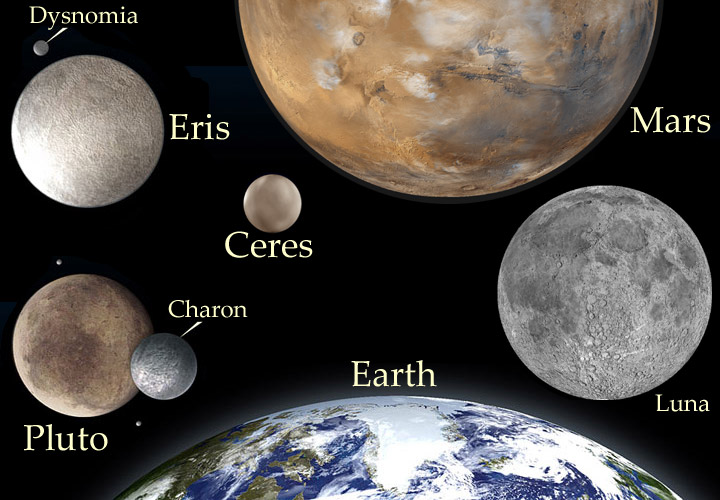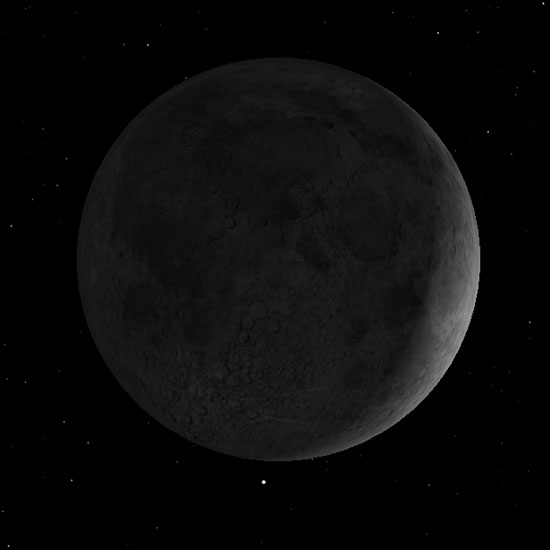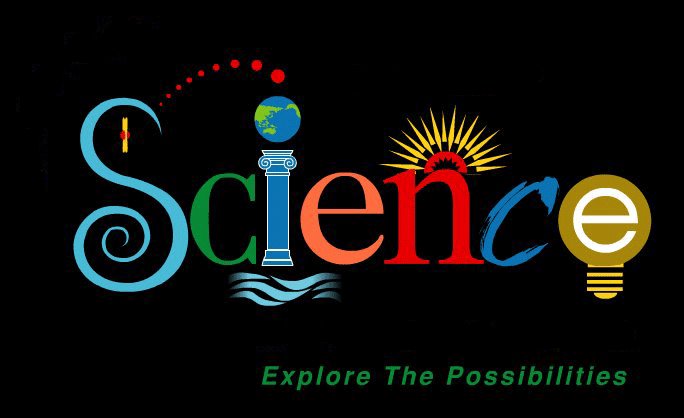A planet (from Greek πλανήτης, alternative form of πλάνης "wanderer") is a celestial bodyorbiting a star or stellar remnant that is massive enough to be rounded by its own gravity, is not massive enough to cause thermonuclear fusion, and has cleared its neighbouring region ofplanetesimals.[a][1][2] The term planet is ancient, with ties to history, science, mythology, and religion. The planets were originally seen by many early cultures as divine, or as emissaries of the gods. As scientific knowledge advanced, human perception of the planets changed, incorporating a number of disparate objects. In 2006, theInternational Astronomical Union officially adopted a resolution defining planets within theSolar System. This definition has been both praised and criticized, and remains disputed by some scientists. The planets were thought by Ptolemy to orbit the Earth in deferent and epicycle motions. Though the idea that the planets orbited the Sun had been suggested many times, it was not until the 17th century that this view was supported by evidence from the first telescopicastronomical observations, performed by Galileo Galilei. By careful analysis of the observation data, Johannes Kepler found the planets' orbits to be not circular, but elliptical. As observational tools improved, astronomers saw that, like Earth, the planets rotated around tilted axes, and some share such features as ice-caps and seasons. Since the dawn of the Space Age, close observation by probes has found that Earth and the other planets share characteristics such as volcanism, hurricanes, tectonics, and even hydrology. Since 1992, through the discovery of hundreds of planets around other stars, called extrasolar planets, scientists are beginning to understand that planets throughout the Milky Way Galaxy share characteristics in common with our own. As of February 2010, there are 429 known extrasolar planets, ranging from the size of gas giants to that of terrestrial planets.[3] Planets are generally divided into two main types: large, low-density gas giants, and smaller, rockyterrestrials. Under IAU definitions, there are eight planets in the Solar System. In order of increasing distance from the Sun, they are the four terrestrials, Mercury, Venus, Earth, and Mars, then the four gas giants, Jupiter, Saturn, Uranus, and Neptune. Apart from the planets, the Solar System also contains at least five dwarf planets[4] and hundreds of thousands of small solar system bodies. With the exception of Mercury and Venus, all planets are orbited by one or more natural satellites.
Thursday 18 February 2010
Posted by shamz at 16:21 0 comments
Posted by shamz at 16:11 0 comments
 Asteroids, sometimes called minor planets orplanetoids, are small Solar System bodies in orbit around the Sun, especially in the inner Solar System; they are smaller than planets but larger thanmeteoroids. The term "asteroid" has historically been applied primarily to minor planets of the inner Solar System, as the outer Solar System was poorly known when it came into common usage. The distinction between asteroids and comets is made on visual appearance: Comets show a perceptible coma while asteroids do not.
Asteroids, sometimes called minor planets orplanetoids, are small Solar System bodies in orbit around the Sun, especially in the inner Solar System; they are smaller than planets but larger thanmeteoroids. The term "asteroid" has historically been applied primarily to minor planets of the inner Solar System, as the outer Solar System was poorly known when it came into common usage. The distinction between asteroids and comets is made on visual appearance: Comets show a perceptible coma while asteroids do not.
Posted by shamz at 16:07 0 comments
A star is a massive, luminous ball ofplasma that is held together by gravity. The nearest star to Earth is the Sun, which is the source of most of the energyon Earth. Other stars are visible in the night sky, when they are not outshone by the Sun. Historically, the most prominent stars on the celestial sphere were grouped together into constellations, and the brightest stars gained proper names. Extensive catalogues of stars have been assembled by astronomers, which provide standardized star designations. For most of its life, a star shines due tothermonuclear fusion in its core releasing energy that traverses the star's interior and then radiatesinto outer space. Almost all elements heavier than hydrogen and helium were created by fusion processes in stars. Astronomers can determine the mass, age, chemical composition and many other properties of a star by observing its spectrum, luminosity and motion through space. The total mass of a star is the principal determinant in its evolution and eventual fate. Other characteristics of a star are determined by its evolutionary history, including the diameter, rotation, movement and temperature. A plot of the temperature of many stars against their luminosities, known as aHertzsprung-Russell diagram (H–R diagram), allows the age and evolutionary state of a star to be determined. A star begins as a collapsing cloud of material composed primarily of hydrogen, along with helium and trace amounts of heavier elements. Once the stellar core is sufficiently dense, some of the hydrogen is steadily converted into helium through the process of nuclear fusion.[1] The remainder of the star's interior carries energy away from the core through a combination of radiative andconvective processes. The star's internal pressure prevents it from collapsing further under its own gravity. Once the hydrogen fuel at the core is exhausted, those stars having at least 0.4 times the mass of the Sun[2] expand to become a red giant, in some cases fusing heavier elements at the core or in shells around the core. The star then evolves into a degenerate form, recycling a portion of the matter into the interstellar environment, where it will form a new generation of stars with a higher proportion of heavy elements.[3] Binary and multi-star systems consist of two or more stars that are gravitationally bound, and generally move around each other in stable orbits. When two such stars have a relatively close orbit, their gravitational interaction can have a significant impact on their evolution.[4] Stars can form part of a much larger gravitationally bound structure, such as a cluster or a galaxy.
Posted by shamz at 16:04 0 comments
Wednesday 17 February 2010
 n astronomical terminology, the phrase new moon is the lunar phase that occurs when the Moon, in its monthly orbital motion around Earth, lies between Earth and the Sun, and is therefore in conjunction with the Sun as seen from Earth. At this time, the dark (unilluminated) portion of the Moon faces almost directly toward Earth, so that the Moon is not visible to the naked eye.
n astronomical terminology, the phrase new moon is the lunar phase that occurs when the Moon, in its monthly orbital motion around Earth, lies between Earth and the Sun, and is therefore in conjunction with the Sun as seen from Earth. At this time, the dark (unilluminated) portion of the Moon faces almost directly toward Earth, so that the Moon is not visible to the naked eye.
The original meaning of the phrase new moon was the first visible crescent of the Moon, after conjunction with the Sun. This takes place over the western horizon in a brief period between sunset and moonset, and therefore the precise time and even the date of the appearance of the new moon by this definition will be influenced by the geographical location of the observer. The astronomical new moon, sometimes known as the dark moon to avoid confusion, occurs by definition at the moment of conjunction in ecliptic longitude with the Sun, when the Moon is invisible from the Earth. This moment is unique and does not depend on location, and under certain circumstances it may be coincident with a solar eclipse.
The new moon in its original meaning of first crescent marks the beginning of the month in lunar calendars such as the Muslim calendar, and in lunisolar calendars such as the Hebrew calendar, Hindu calendars, and Buddhist calendar. But in the Chinese calendar the beginning of the month is marked by the dark moon.
Posted by shamz at 16:30 0 comments
Full moon is a lunar phase that occurs when the Moon is on the opposite side of the Earth from the Sun. More precisely, a full moon occurs when the geocentric apparent (ecliptic) longitudes of the Sun and Moon differ by 180 degrees; the Moon is then in opposition with the Sun [1]. At this time, as seen by viewers on Earth, the hemisphere of the Moon that is facing the earth (the near side) is almost fully illuminated by the Sun and appears round. Only during a full moon is the opposite hemisphere of the Moon, which is not visible from Earth (the far side), completely unilluminated.
The time between similar lunar phases - the synodic month - is on average about 29.53 days, so that the full moon falls on either the 14th or 15th of the lunar month in those calendars that start the month on the new moon. In any event, as lunar months are counted in discrete numbers of days, lunar months are said to be either 29 or 30 days long.
Posted by shamz at 16:28 0 comments
A blue moon can refer to the third full moon in a season with four full moons, or the second full moon of a calendar month.[1] Most years have twelve full moons which occur approximately monthly, but in addition to those twelve full lunar cycles, each solar calendar year contains an excess of roughly eleven days compared to the lunar year of 12 lunations. The extra days accumulate, so every two or three years (7 times in the 19-year Metonic cycle), there is an extra full moon. Lunisolar calendars have rules on when to insert such an intercalary of embolismic ("leap") month, and what name it is given; e.g. in the Hebrew calendar the month Adar is duplicated. The term "blue moon" comes from folk lore. Different traditions and conventions place the extra "blue" full moon at different times in the year.
- In calculating the dates for Lent and Easter, the Clergy identify the Lent Moon. It is thought that historically when the moon's timing was too early, they named an earlier moon as a "betrayer moon" (belewe moon), thus the Lent moon came at its expected time.[2]
- Folklore gave each moon a name according to its time of year. A moon which came too early had no folk name – and was called a blue moon – bringing the correct seasonal timings for future moons.
- The Farmers' Almanac defined blue moon as an extra full moon that occurred in a season; one season was normally three full moons. If a season had four full moons, then the third full moon was named a blue moon.
- Recent popular usage defined a blue moon as the second full moon in a calendar month, stemming from an interpretation error made in 1946 that was discovered in 1999.[1] For example, December 31, 2009 was a blue moon according to this usage.
A "blue moon" is also used colloquially to mean "a rare event", especially in the phrase "once in a blue moon".
Posted by shamz at 16:19 0 comments
The Moon is Earth's only natural satellite and the fifth largest satellite in the Solar System. The average centre-to-centre distance from the Earth to the Moon is 384,403 kilometres (238,857 mi), about thirty times the diameter of the Earth. The common centre of mass of the system (the barycentre) is located at about 1,700 kilometres (1,100 mi)—a quarter the Earth's radius—beneath the surface of the Earth. The Moon makes a complete orbit around the Earth every 27.3 days[nb 3] (the orbital period), and the periodic variations in the geometry of the Earth–Moon–Sun system are responsible for the phases of the Moon, which repeat every 29.5 days[nb 4] (the synodic period).
The Moon's diameter is 3,474 kilometres (2,159 mi),[5] a little more than a quarter of Earth's. Thus, the Moon's surface area is less than a tenth of the Earth (about a quarter of Earth's land area), and its volume is about 2 percent that of Earth. The pull of gravity at its surface is about 17 percent of that at the Earth's surface.
The Moon is the only celestial body on which human beings have made a manned landing. While the Soviet Union's Luna programme was the first to reach the Moon with unmanned spacecraft, the United States' NASA Apollo program achieved the only manned missions to date, beginning with the first manned lunar mission by Apollo 8 in 1968, and six manned lunar landings between 1969 and 1972–the first being Apollo 11 in 1969. Human exploration of the Moon temporarily ceased with the conclusion of the Apollo program, although a few robotic landers and orbiters have been sent to the Moon since that time. The U.S. had committed to return to the Moon by 2018,[6][7][8] however that commitment has been put into jeopardy by the proposed 2011 budget, which will cancel Constellation, NASA's project to send humans back to the moon by 2020. On November 13, 2009, NASA announced the discovery of proof that water exists on the Moon, based on data obtained from the LCROSS lunar impact mission.[9]
Posted by shamz at 16:18 0 comments








